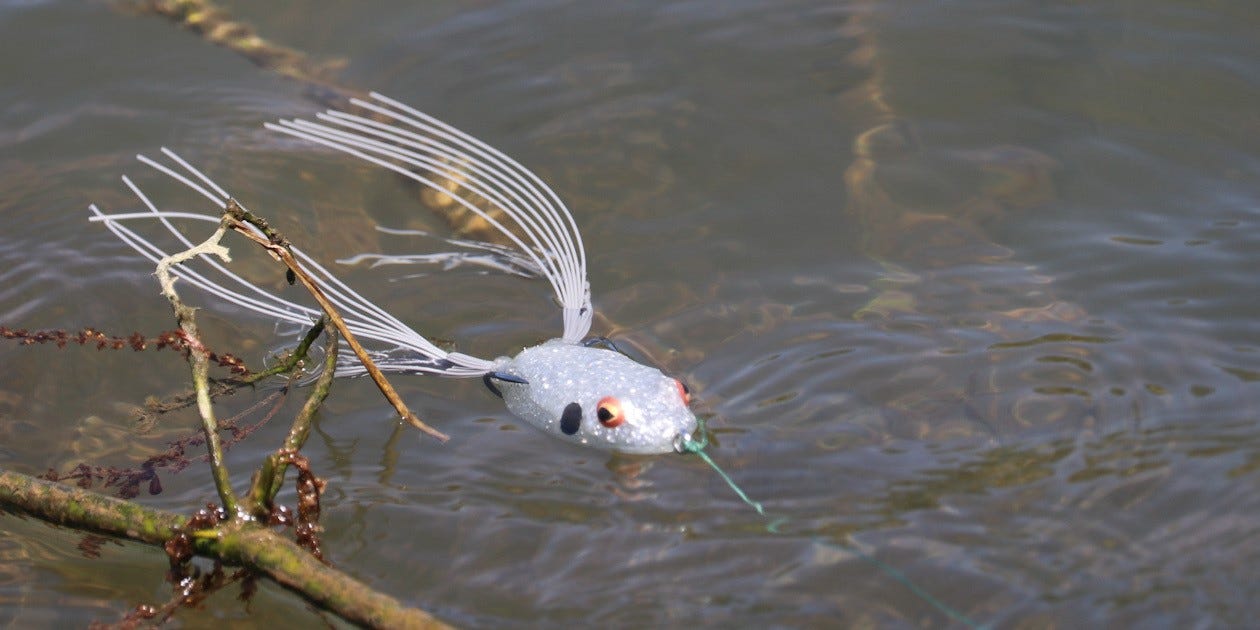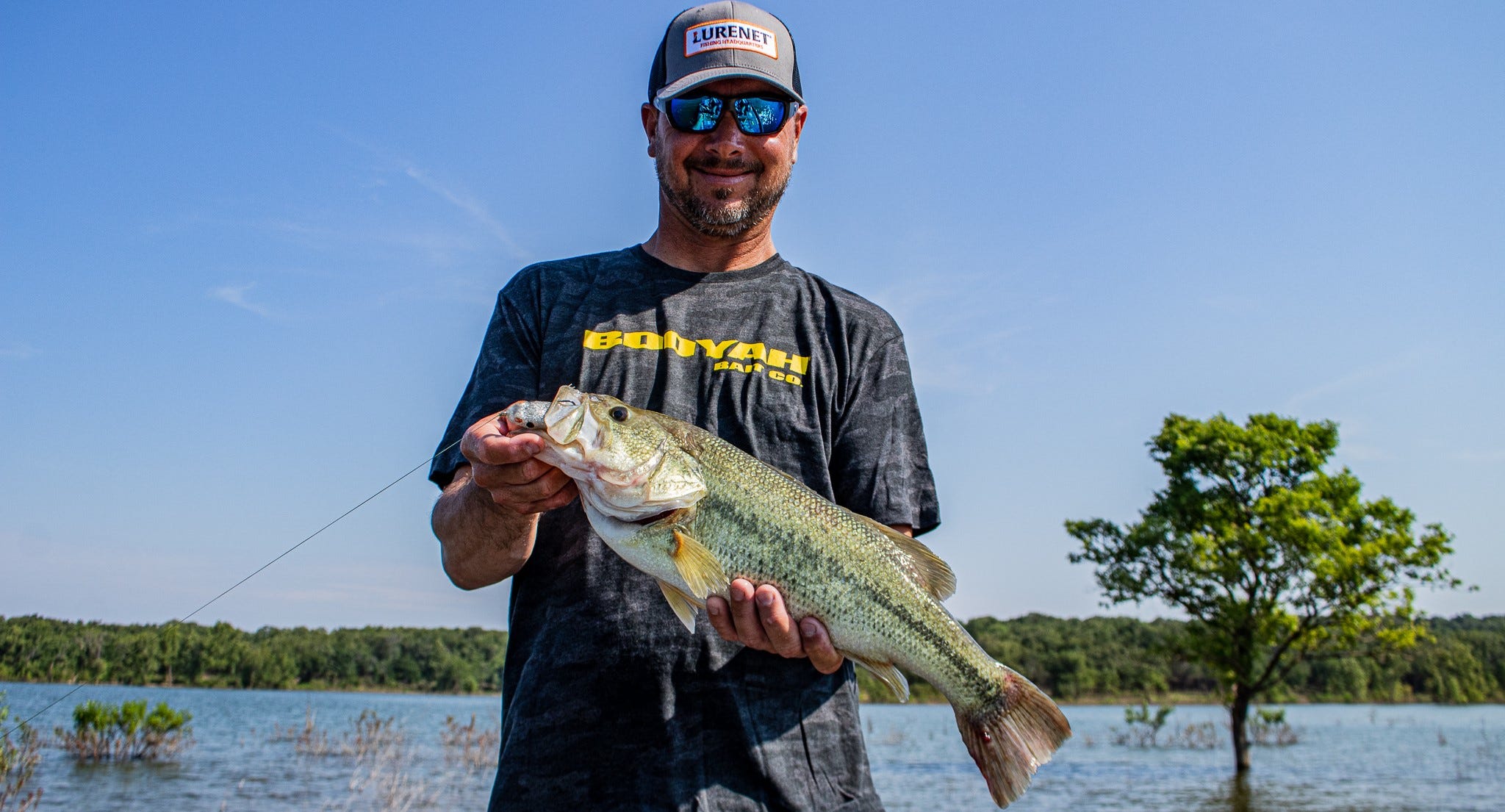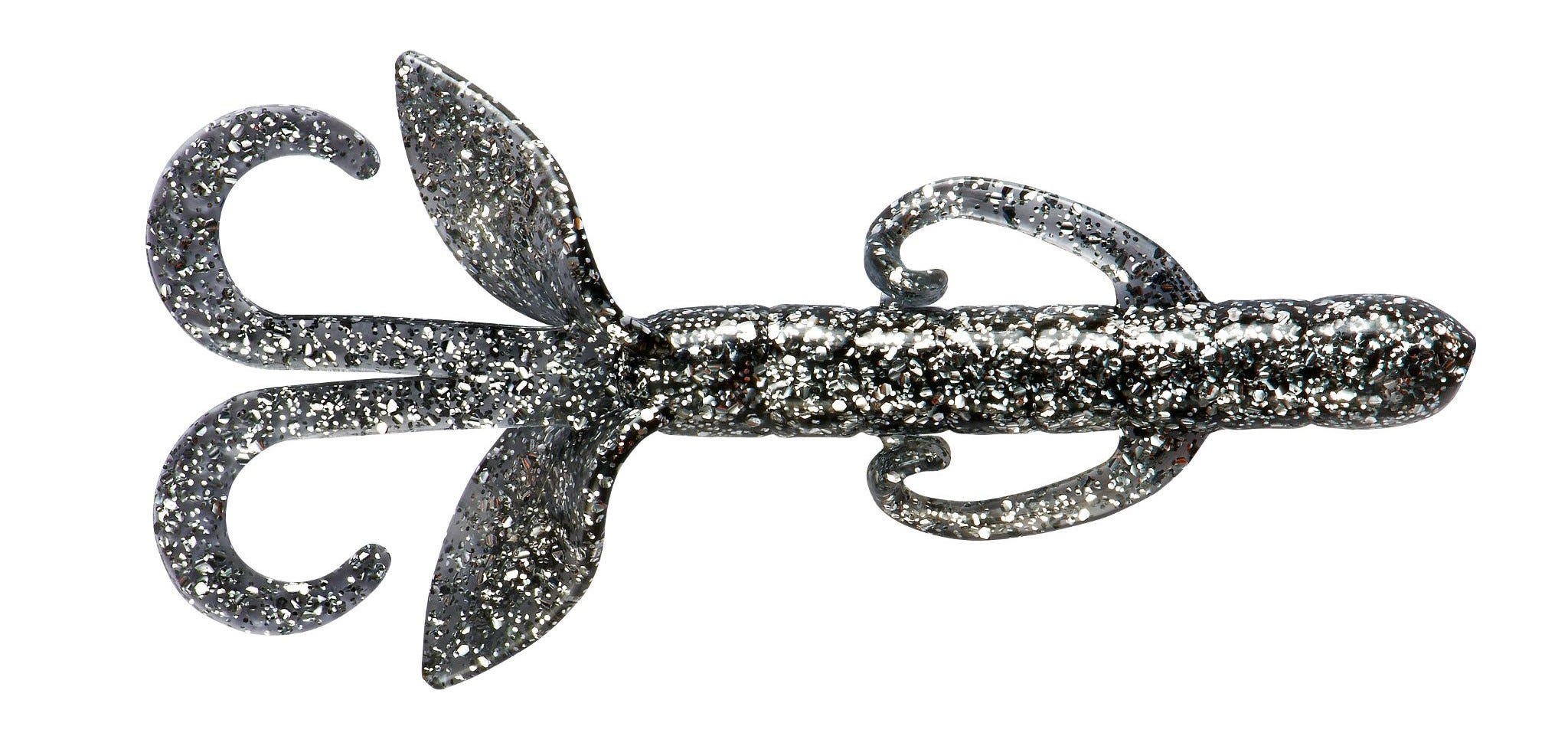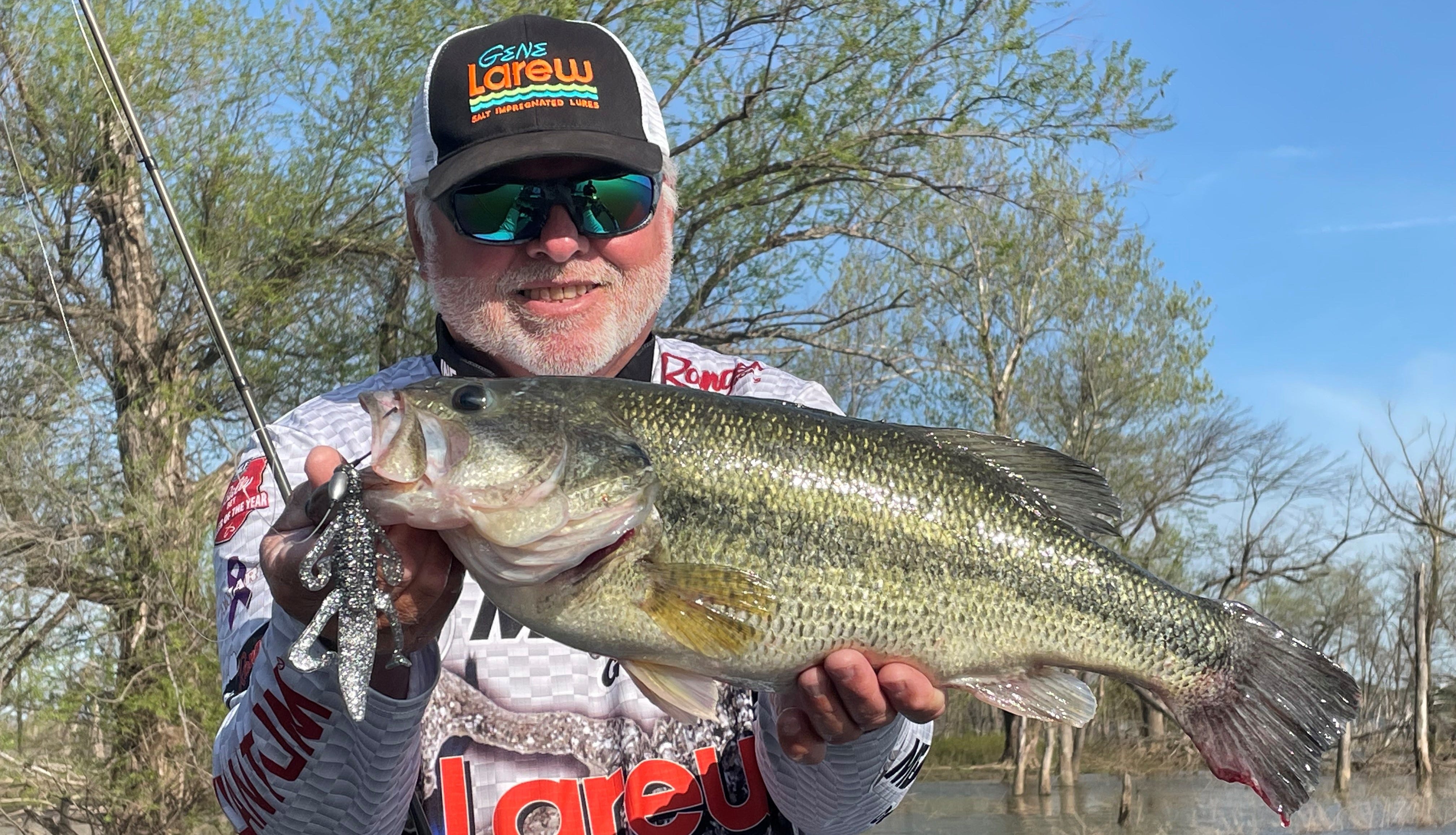- Oct 16, 2023
Change Your Thinking About Soft Plastics for Fall Bass
Traditional wisdom regarding soft plastic colors goes out the window during autumn on many rivers and lakes. Let’s explore how flashy colors help you capitalize on fall bass behavior.


Frogs aren’t shimmery and silver. That is true. However, if you were to use that observation to discount the Disco Ball color of the BOOYAH Pad Crasher, you’d be missing an important aspect of the story. A soft-plastic frog isn’t only used to imitate a frog, and a day’s most productive frog color often excels because it suggests the bass’ forage in an area.
During autumn, shad are the forage that drive the bass’ behavior in many areas. Dense shad schools draw bass into areas during fall, and bass in those areas have shad on their minds – constantly. Many anglers throw spinnerbaits, crankbaits and hard topwater lures during autumn, relying mostly on shad colors. Those are outstanding options, but they don’t always fit the mood of the bass and won’t necessarily work in all the places where bass will be holding. That’s where shimmery metallic soft-plastic lures, even in shapes that aren’t decidedly shad-like and with presentations that aren’t traditionally associated with imitating shad, can be difference makers.
Fall Shad Influence


Shad provide vital forage for bass throughout the year in countless rivers, lakes and reservoirs, but their role in dictating bass behavior and consequently bass fishing patterns gets magnified during fall. Schools of shad move up creek and river arms of reservoirs and stray shallower this time of year.
The bass, which are wanting to “feed up” before winter slows their metabolism and draws their food back to deeper water, follow the shad up the creeks and into shallower water. Up the creeks, the bass find comfortable temperatures throughout the water column and an abundance of cover, often including laydowns, stumps, dock, riprap and various vegetation.
The hyper-abundance of shad can be both good and bad for anglers. It draws the bass shallower, where it’s generally easy to make good presentations, and makes likely fish-holding area more obvious. That said, it also can make the fish fussier. With SO MUCH available forage the bass instinctively become more selective, and sometimes that selectivity is color related. When flashy, silvery forage is so abundant, the fish will sometimes reject anything that doesn’t flash.
It's worth noting that the bass won’t always be right in the baitfish school. If shad are abundant on a big flat in a creek, you can bet bass are nearby. However, they might be buried in brush, up in the grass or using shoreline cover, even if the cover is away from the edge of the shad school.
Disco Ball
Fall is prime time for fishing a Pad Crasher. Mats of milfoil and hydrilla, which sometimes get too thick for bass to use in mid-summer, start breaking up beneath the surface, leaving openings underneath. The best mats are recognizable by the “cheese” that coats the surface between the grass stems. Good mats are also identifiable by “blowholes” where fish have fed on top and by activity, including birds, the smacking sound of bluegills eating insects in the grass and splashes from baitfish and bass.
If some of that life is in the form of shad schools near the edges of the matted vegetation, the Disco Ball Pad Crasher provides an outstanding option. Although bass might not see the color of a Pad Crasher through a thick mat, many hits occur when the bait crosses an opening in the mat or after it moves away from the surface vegetation. Many mats also have significant subsurface vegetation extending well out from where it is matted on the surface.
Of course, frogs aren’t only for fishing mats. As the name Pad Crasher suggests, they are great for working lily pads, which often have significant gaps along the edges, and they work wonderfully working edges of emergent vegetation. In addition, a Pad Crasher provides a topwater option for fishing stumps and laydowns and other cover that is too snaggy to work with a traditional topwater lure. The lure itself is extra visible in those types of areas, and the shad-suggesting silver flash can make a major difference!
Tin Foil


YUM’s Tin Foil color, which was requested by Jason Christie for the very types of reasons we’re talking about, has a smoke base but is absolutely loaded with silver glitter, plus some dark fleck for contrast that really enhances the namesake Tin Foil look.
Tin Foil is available in the 5-inch YUM Dinger, Christie Critter, Christe Craw and Craw Chunk, which are four of Christie’s go-to YUM baits. The Christie Critter, Christe Craw and Craw Chunk clearly are not shad imitations by shape or the ways they are normally fished, and Dingers are most often fished with slow, sinking presentation.
That said, during fall when the bass are relating so heavily to shad, and often in shallow water, Christie considers the silver flash that suggests a shad can be important for triggering strikes – no matter the lure style – and those baits effectively work in places where most traditional shad lures won’t go.
Smoke Silver Biffle Bug


Tommy Biffle contends that if a bass has ever eaten a shad, it’s going to relate to the Smoke Silver Biffle Bug color, which has similar characteristics to YUM’s tinfoil. He’ll fish this color year-round if there are shad in an area where he is fishing a Biffle Bug on a HardHead. However, that comes into play the most during autumn.
The Smoke Silver color is available in the original Biffle Bug, Biffle Bug Jr and the new Flipping Biffle Bug. The Flipping Biffle Bug has the same features as the original Biffle Bug. However, it has a solid head to add bulk and hold a big flipping hook, larger back legs, and an extra set of swimming legs in the front to create extra motion and vibration.



